Agrofibre for strawberries - types, application and reviews of gardeners
Strawberries, as a valuable and tasty berry, have firmly established themselves in garden plots. For industrial production, it is grown in the fields by farmers. But the culture's capriciousness to care is known, and not everyone can keep a strawberry field clean. A lot of time and effort is spent on weed control.
It is possible to reduce the labor intensity of work on caring for strawberry plantings with the help of materials developed by scientists. Placed on the ground, they will help keep the berry beds clean and moisture in the soil. The technology of planting strawberries under agrofibre has been tested and appreciated by many gardeners.
Content:
- Agrofibre - what is it?
- Types of material, their features
- How to choose the right agrofiber?
- Preparing the soil for the material
- How to lay the fiber correctly?
- Strawberry planting rules
- Berry care recommendations
- Reviews on the use of agrofibre
Agrofibre - what is it?
Thought of replacement mulching planting strawberries shelter material came to the Americans. Back in the middle of the 20th century, fiber, which was later used for truck farming, was needed to disguise soldiers during hostilities. It was notable for its low cost and successfully replaced natural camouflage fabrics. Already in the 70s, European agricultural producers appreciated the fabric obtained by pressing. It has become indispensable for sheltering garden and vegetable garden plants during frosts.
The practicality of the covering material, its lightness, in contrast to cellophane, is appreciated at its true worth, and now every summer resident has such a fabric available. It washes well, so it has been used for more than one season. Due to its low fiber density, it does not damage the plant stems when covered from above. The difference from cellophane is that the material has good air and moisture permeability.
Disposal of the material is easy, polypropylene fabric is well recyclable.
There are several types of agrofibre. Black fabric is needed in order to cover the area for planting strawberries, strawberries. It will help warm the earth, and weeds will not break through the fabric. White fiber is needed to cover vegetable crops. The types of canvas differ in terms of density. Each gardener chooses the fabric that he needs to increase the yield of crops on the site.
You can learn how to lay agrofibre manually from the video:
Types of material, their features
If earlier mulching of strawberry plantings took place using peat, needles, sawdust, then later they began to use various materials. Among them was roofing material and rubber sheets. But the cumbersome design, the inability of materials to pass moisture led to the fact that the gaze of summer residents turned to lighter, more economical and environmentally friendly types of mulching fabric.
| Material name | Features of the | How to use |
| Black polyethylene film | It serves to accumulate heat, protects the garden from weeds. But the film quickly deforms, does not allow air to pass to the roots of plants. |
On plantations, strawberries are laid directly on the ground. |
| Lutrasil | The fabric is produced for covering greenhouses and greenhouses. The fiber, strong in structure, is wear-resistant, differs in lightness. There is a material of the mesh and fibrous type. | Textiles are designed for shelter from frost, protection of young plants for the winter. |
| Agrospan | An environmentally friendly non-woven product made from polypropylene fibers is needed to create a comfortable microclimate. Thanks to the stabilization of night temperatures, it protects against frost and hail. It comes in white and black. | Used as a shelter for seedlings, bushes. Strawberries need tissue to reduce the amount of weeds in the planting. |
| Spunbond | A nonwoven fabric is prepared by melting polymers. The fiber is distinguished by its durability, wear resistance. | The canvas is used for growing crops in greenhouses, open ground. The beds covered by it warm up faster and are ready for planting seedlings. It serves to protect against pests and rodents. |
| Spunbel | Durable woven textiles are extruded. It stands out for its strengthening properties, withstanding heavy loads. Practical and economical. | They are used not only in agriculture, but also in construction and design. |
How to choose the right agrofiber?
Gardeners cover the area with specially selected black material before planting strawberries. Dark polyethylene film is much cheaper, but it has many disadvantages. Under the rays of the sun, it quickly deforms. Since the coating does not allow moisture and air to pass through, the berry bushes can rot under it. And the film will serve one season.
Agrofibre is more expensive in cost, but it has many advantages:
- The nonwoven material is appreciated for the fact that it allows moisture to pass through well during spillage. And there is enough air to the roots of strawberries.
- The ground under the fiber does not overheat excessively, the ground temperature is in harmony with the surrounding air.
- The absence of cracks, damage on the polypropylene material helps to use it for 3-4 seasons, without removing it from the ground, without damaging the bushes of the berry culture.
- The density of spunbond can be different, but for strawberries it is suitable for 60-70 g / m2.
- The width of the fiber is different and is selected in accordance with the size of the beds.
- Do not forget about the color of the fabric. Black - preferred for strawberries.
On a flat surface of a strawberry plantation, agrofibre will serve for a long time and will help to increase crop yields.
Preparing the soil for the material
Any agricultural work related to planting begins with a thorough preparation of the soil. The selected area for berry crops should be well lit by the wind, protected from drafts. The formation of the beds should take place on a flat surface. Strawberries planted on a hill will be negatively affected by frost, freeze more. And in the summer, the earth will dry out faster.
Before spreading the material:
- Digging up the site.
- Remove weeds and plant roots.
- Debris is cleaned.
- Introduce 1 bucket of humus and 2 glasses per square meter wood ash.
- Fertilizers consisting of nitrogen and potassium are covered with a rake.
- The plot is leveled with pegs of future rows of strawberries with a distance of more than 1 meter between them.
When the site is ready, proceeds to spreading the agrofibre.
How to lay the fiber correctly?
It is necessary to start work on the construction of a plantation with agrofibre in advance, 2 weeks before planting strawberries. During this time, the soil will sit down and it will be easy to correct the flaws of the site: add pits, trim elevated places.
Correct laying of the nonwoven material is carried out with overlapping strips. The edges are overlaid on top of each other 20 centimeters wide. The procedure is carried out carefully. It is necessary to lay it with bricks, stones pressing the fiber, otherwise the wind will interfere with the work. The canvas is fixed with specially made wire pins. The length of the studs ranges from 25 to 50 centimeters.
If the material is double-sided, then it is necessary to exclude such a situation when the moisture-permeable surface is interchanged with the protective one.
Then, holes are cut in the prepared field for planting strawberries. Holes are made either round or cruciform. To make it more convenient to care for the plantings of strawberries, paths are marked. Better to sprinkle them with wet sawdust. Then the fiber will be pressed, and moisture will remain in the area longer. Correctly spread material will create favorable conditions for the growing season of plants.
Strawberry planting rules
Berry bushes are planted in two lines with an interval of 60 centimeters between them. And holes for bushes are made at a distance of 20-25. Inside the canvas, holes are dug through the holes in the canvas.
... If the cultivation of strawberries took place in peat cups, then the plant is lowered along with the container deep into the hole and sprinkled with nutritious soil. With open roots, the bushes are placed in the holes, first by cutting the roots to a length of 7-9 centimeters. The pits will be shallow.
When the landing takes place, they look so that the corners of the canvas in the holes are tucked inward.
The rosette with leaves will be on the surface of the agrofiber. After planting, the beds are watered abundantly. Watering should take place so that water gets inside the holes. It is best to use drip irrigation. The successful development of berry culture depends on the correct planting.
Berry care recommendations
The fiber laid on the berry plantation will protect the bushes from clogging with harmful herbs, and will allow moisture not to evaporate quickly. Therefore, it remains only on time:
Water the beds with warm water as the soil dries:
- Feed organic and mineral fertilizers 3 times per season: at the beginning of the growing season, flowering, after harvest.
- Collect strawberries.
- Transplant the antennae to a new place.
Berry crop care will be simple. And the use of fiber will save time and physical strength.
The video will introduce the rules for planting strawberries under agrofibre:
Reviews on the use of agrofibre
Nadezhda, Oryol: I suffered for a long time from the fact that strawberries grew poorly in the country. I tried to look after her according to the rules. But there was not always enough time to weed. And it was not possible to water the bushes in time. I decided to lay a black spunbond on the site. It took some tinkering, but the results were worth it. Strawberries grow well, and I collect a lot of berries.
Olga, Novosibirsk: Everyone loves strawberries, but it is difficult to grow them. Very picky about leaving. Either there is not enough moisture, then the weeds will crush. I solved the problems in one fell swoop. She laid black material on a new site, planted young bushes. Now the berry has grown and we are pleased with rich harvests.
Nikolay, Moscow: I am an experienced gardener. I have been growing strawberries for a long time in beds covered with black material. At first it was cellophane film, which had to be changed frequently. Now I covered it with agrofibre, and for several years did not know the hassle of strawberries. When transplanting to a new location, I again use strong tissue. It is just enough for the plantation before the bushes grow old. I buy a new canvas for the young.
Growing strawberries for a modern summer resident is much easier than before. Agrofibre came to the rescue as a substitute for mulching. How to use it correctly is described in the material. The article will help you choose the right material, lay it down. Reviews of summer residents will tell about its advantages.



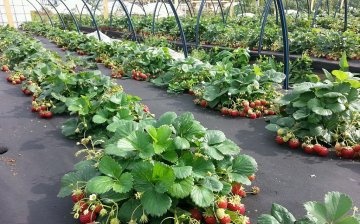

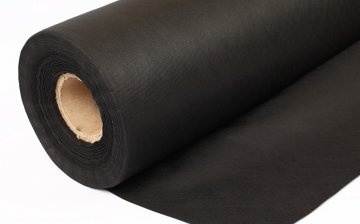


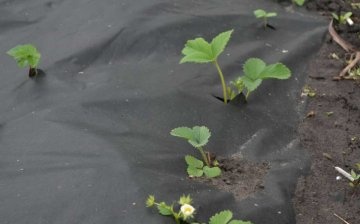
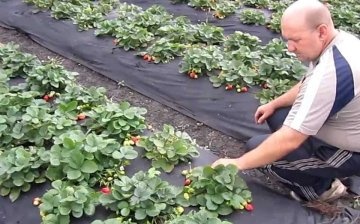







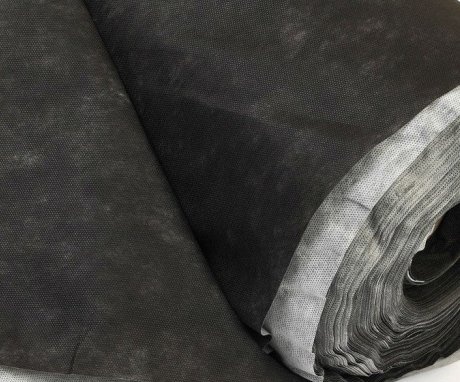
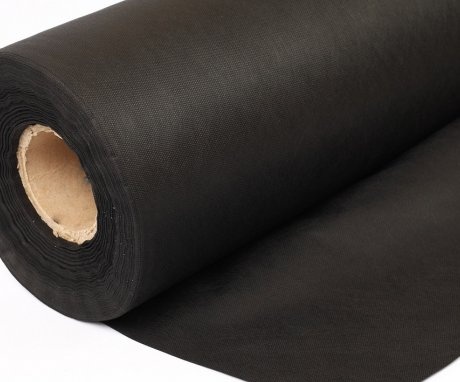
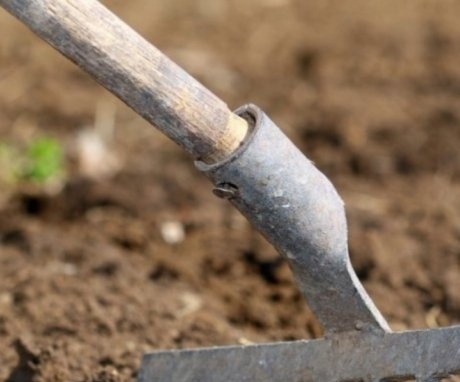
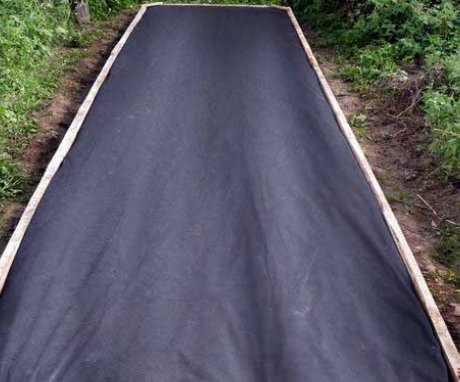
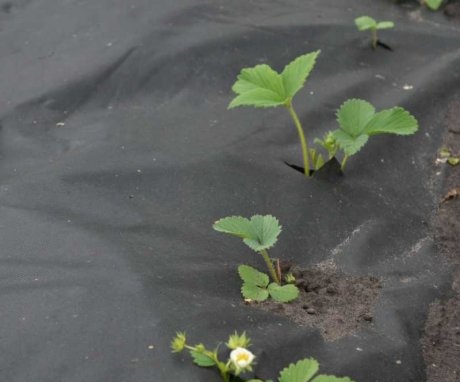
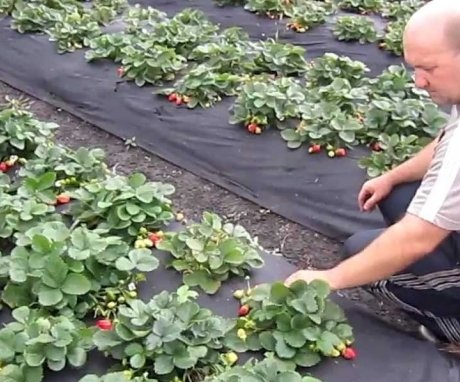
I have heard about the great efficiency of agrofibre, but I have not yet acquired it for myself. Although for strawberries, it really is an excellent solution to many problems. Next year I will definitely deal with this issue, since it is in the harvest of berries that I am interested, as if in nothing. In our region, it is in demand and therefore I grow it mainly for sale.
I wonder if this agrofibre is expensive, judging by the description, the thing is very useful not only for growing strawberries, this material can be used with other types of plants.
I liked this technology for growing strawberries. Agrofibre will retain moisture in the soil and, at the same time, will be a mulching material that does not allow weeds to grow. As a result, there will be much less care for your strawberries.